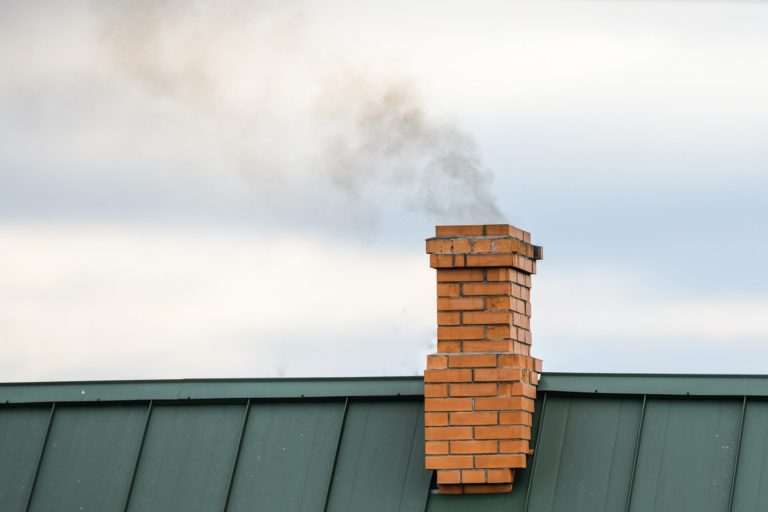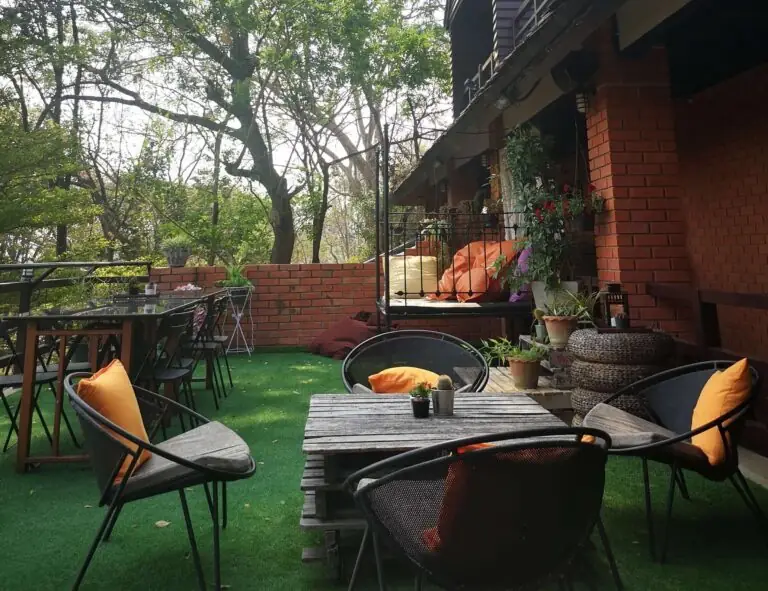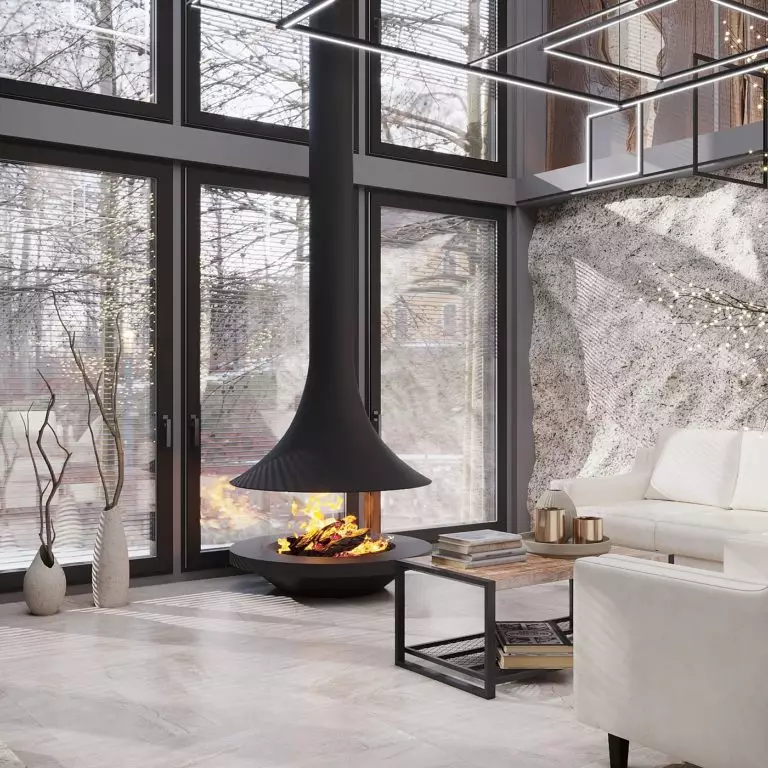
When constructing the chimney, you paid more attention to the aesthetic plan. Over time, the pipe became clogged with soot and significantly decreased. This problem is solved by installing a new exhaust duct inside the chimney. From the article, you will find out in more detail what a chimney liner is, its advantages, materials for it, and the most common mistakes.
Why do you need a chimney liner?
Before starting the chimney’s reconstruction, it is necessary to understand what a liner is and the benefits of its use.
Most chimneys are rectangular or square. Thus, soot appears and gradually builds upon the walls, which leads to a decrease in efficiency and a deterioration in traction. The problem is in the shape of the section and the rough surface of the materials from which the chimneys are built – more often brick.
Round and oval chimneys have smooth walls, and soot practically does not cling to them. In order not to rebuild the chimney, the chimney liner was invented. The process involves inserting a pipe inside the chimney. The best option is stainless steel, but ceramics and polymers are also often used.
What is a chimney liner?
This is mainly the process of installing a new path inside the old line without destroying the masonry. After you create a new path for removing combustion products, the smoke from the chamber will be directed along with it, completely bypassing the old path. This method can also be used for ventilation.
To decide to line a chimney, it is not necessary to wait until it clogs up. The specialists recommend installing sleeves even at the stage of building a house. This will make your chimney work better and protect the brickwork from the aggressive effects of combustion products, coupled with temperature extremes and condensation.
The chimney liner has a smooth surface and is never installed with right-angle bends. This allows smoke and solid particles to freely rise through the channel and leave the chimney without settling on its walls.
Chimney liner pros
The chimney liner provides the following positive aspects:
After the duct has been wrapped, you will get a higher indicator of the furnace efficiency and increase the chimney service’s terms and quality.
When you need to line the chimney
It is not necessary to line the chimney only after you have had problems with it. Ideally, do this even during the building of the house, before finishing work.
Sooner or later, anyway, the need to line the chimney will arise. And provided that you have already settled in the house, additional problems will arise. You will need to remove and redo all the trim and masonry of the chimney. And this also leads to additional costs.
It is necessary to line the chimney in cases where:
Line the chimney during the building phase, and you will avoid many problems. However, if you purchased a ready-made house, and when designing it, the chimney liner is not provided, it is better to do it right away. This way, you can avoid unnecessary costs for cleaning the chimney and repairs in the event of its destruction.
Features of the work on the liner of the chimney
As already mentioned above, brickwork with a square and rectangular chimney section is prone to soot accumulation. You have two options for solving this problem. You can carry out their complete dismantling and lay a new chimney. However, this is very expensive. Complete relocation of the chimney will require you to spend on dismantling work, purchasing new materials, and delivering them to the construction site.
The second option is less costly in terms of money and labor. To solve the problem, just install a chimney liner. The liners are either round or oval to prevent future blockages.
Chimney liners types
The installation principle is the same for every type; only the material from which the liner is made is different. The most common chimney liner materials that can be found in specialized stores are:
Choose an insert based on your preferences and capabilities. The main focus is on material life, reaction to aggressive environments, and resistance to weathering.
Ceramic liners
Ceramic liners are made with round and oval sections. With ceramic liners, you will restore a chimney that has even significant deformations. The material is resistant to temperature influences, aggressive environment and is very durable. Use a ceramic insert after disassembling the main chimney. The disadvantages include its high cost and high weight.
Polymer liners
The liner is made based on a fiberglass mesh with polymer impregnation. The length of the model sections is 24” (60 cm) each, have a diameter within 20” (50 cm). The service life of polymer products is up to 30 years. The material has good resistance to aggressive influences and condensate settling.
One of the main advantages is the ease of installation. You can immediately put the entire liner, which is capable of bending up to angles of 30°. This is very convenient when repairing brick chimneys. Manufactured for high-temperature and low-temperature furnaces.
Stainless steel liners
Stainless steel liners are used more often than others. This is due to the ease of installation and relatively low cost. For their installation, you do not need to disassemble the old chimney masonry. Besides, this type has high strength, is resistant to negative factors and high temperatures. Installation does not require experience. You can do the work yourself.
Among the cons are the difficulties of installing the liner in complex and non-standard sections of the chimney. Stainless steel pipes do not lend themselves well to bending, so it will be necessary for such sections to make the required length with the required number of elbows.
Chimney liner for brick houses
Living in a brick house with stove heating, over time, you will notice that the stove is not working properly or is completely affected. The brick has a rough surface, which contributes to the rapid accumulation of soot on the chimney walls. Besides, brickwork quickly collapses under the influence of negative factors.
You need to know the main causes of destruction:
As a result, the traction in the furnace decreases from the accumulated soot, which leads to a deterioration in the operation of the entire heating system. There may even be a backdraft effect, and smoke will fill your house. It is very dangerous for health and life. Therefore, timely carry out preventive work to clean the chimney or repair the entire chimney. Do this before the start of the heating season.
You can solve this problem in one of two ways, namely:
Since the first option will be more time consuming and costly, choose the second.
Typical errors
When lining your chimney, beware of making typical mistakes that can impair the chimney’s normal functioning. Do the docking so that the slots of the joints are turned in the direction of the smoke passage. During installation, do not deform and scratch the pipes.
List of major mistakes, do not make them when performing work:
Conclusions
When rebuilding or modernizing the flue system, avoid common mistakes, and you will avoid problems in the stove’s operation. And if you are not confident in your abilities, it is better to contact specialists.



